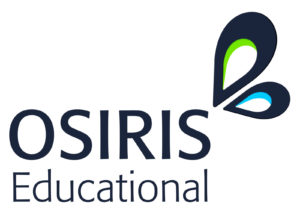Menu
5 Ways to Encourage Problem-Solving in your Classroom
A blog from Osiris Educational

5 Ways to Encourage Problem-Solving in your Classroom
On average a teacher spends 86% of the time talking during a lesson. We are not giving our students the chance or the time to identify, solve and make their own mistakes.
How can we ensure they are learning the skills they need most without this vital part of the process?
Problem-solving skills are a necessary part of life and we as educators need to make sure students are prepped and ready to take on any issues they may be faced with.
The ability to identify, analyse and work out a solution is a valuable skill that is not only useful in the classroom, but also outside of school time. Implementing such practices into your classroom plan will help improve cognitive and social development. Once equipped with the tools they need to address and solve problems, students begin to take more control of their learning experience.
Here are 5 ways you can support problem-solving in your classroom:
1. Problem Solve as a Group
Have your students think aloud in a group setting. This allows for critical analysis and the chance to bounce solutions off each other. Introduce a two-column system whereby, the first column shows their idea to solve the issue and the second is the reasoning behind the idea. This helps students think about their own problem-solving skills and promotes cooperation whilst creating a solution.
2. Explain and Encourage
Explain the problem and encourage your students to think about why the task is important. Why is the way they came to a solution more important than the solution itself? Explain what skills they are gaining, why those skills will help and how a step-by-step process is better than a quick answer.
3. Time and Patience
Our basic nature means we want answers quick and fast without doing the work. Your students will want to race to the finish line with the quickest thought. We must show them that time and patience improve problem-solving and provides us with a clearer answer. Reminding your students that it is not a competition and not a race to finish first is essential.
4. Ask Questions and Reflect
Get your classroom thinking. Ask questions throughout the problem-solving task. Give them a chance to reflect. Once they have come to a solution, ask your students these questions:
- Why did you choose that method?
- Does this solve your problem the most efficient way?
- What did you learn by solving this problem?
- Could you have done this a different way?
5. Let them Learn
The hardest part. Hands off, let them work. As educators, we are eager to help, give answers and make sure our students are doing it the right way. To allow for success in problem-solving, we must allow them to make mistakes and work it out for themselves. Upon reflection, of course, make suggestions. Show them how you would do it, but these skills must be developed independently. After all, they won’t have you to guide them forever!
Looking for more on problem-solving in the classroom? Our expert trainers can provide bespoke solutions in your school – contact us today for more information or book a quick meeting with our Programmes Manager.

